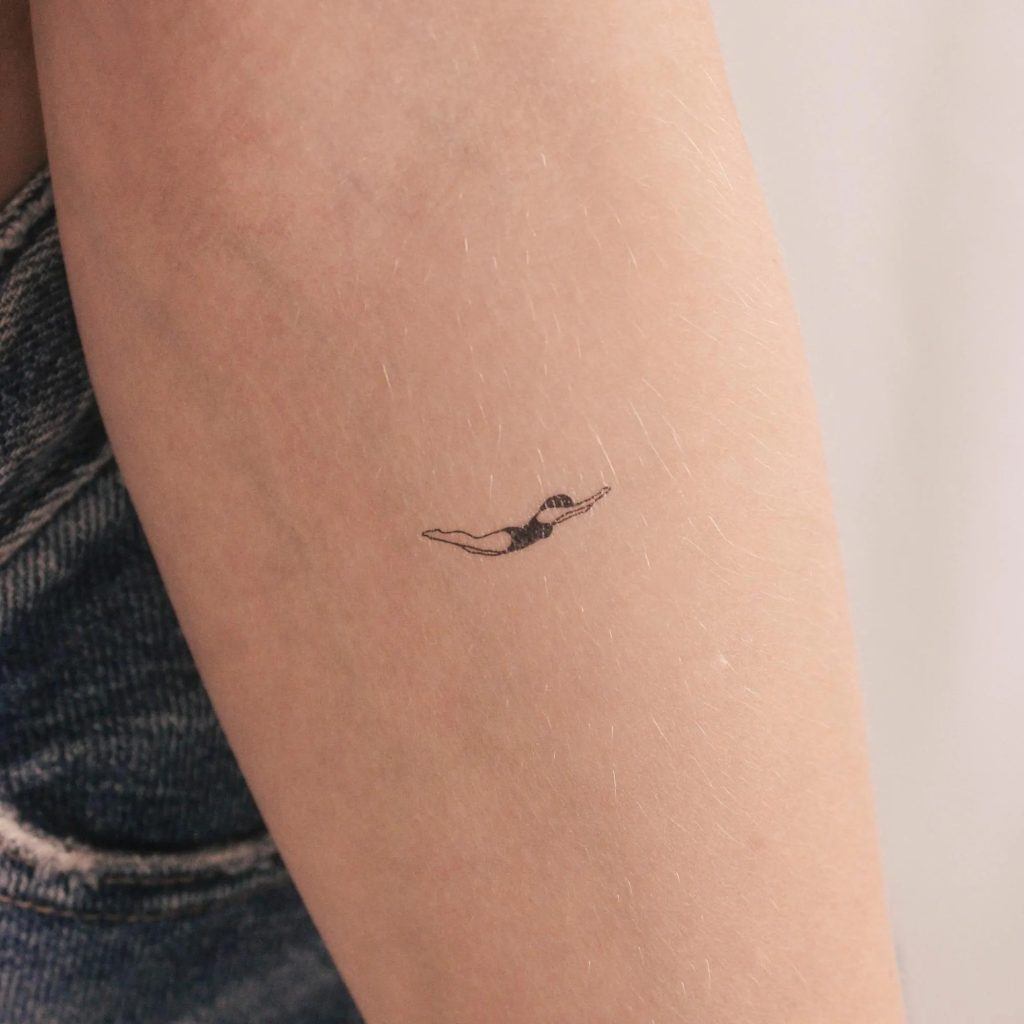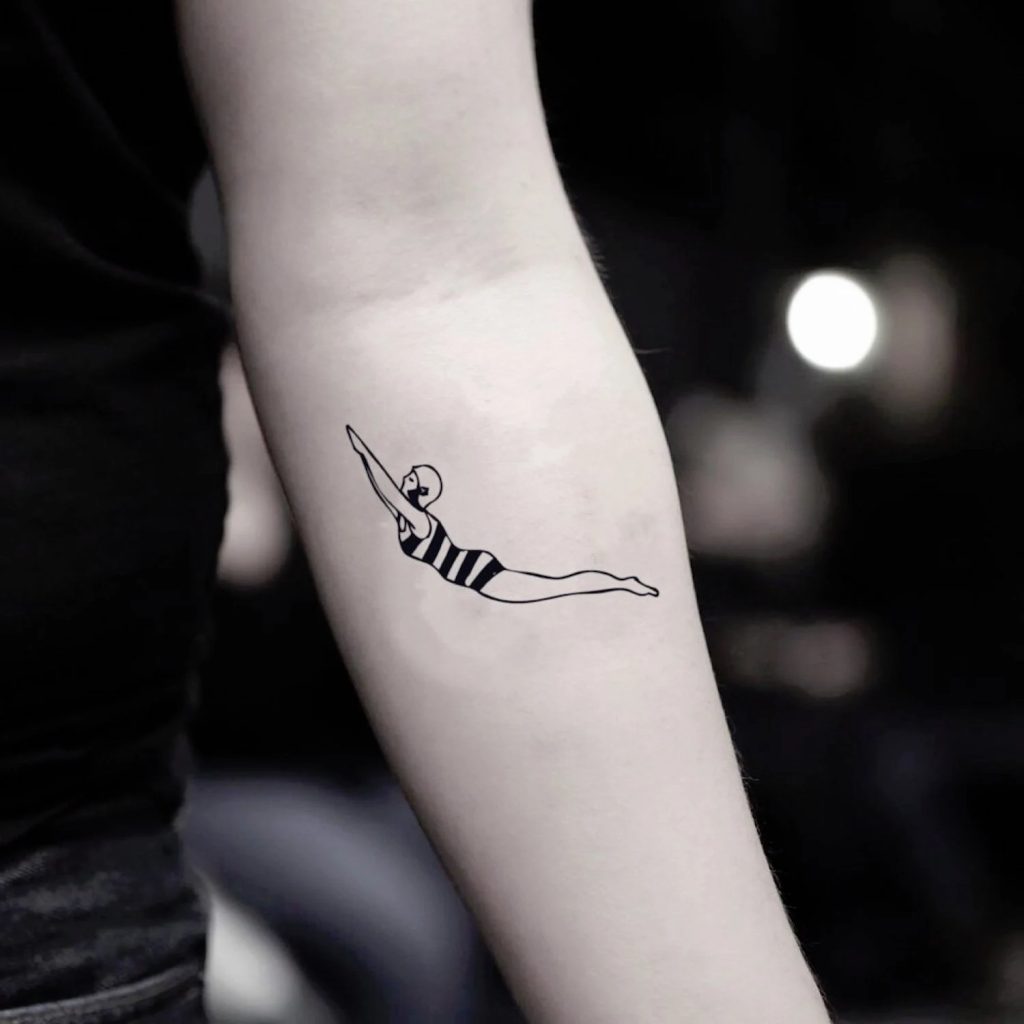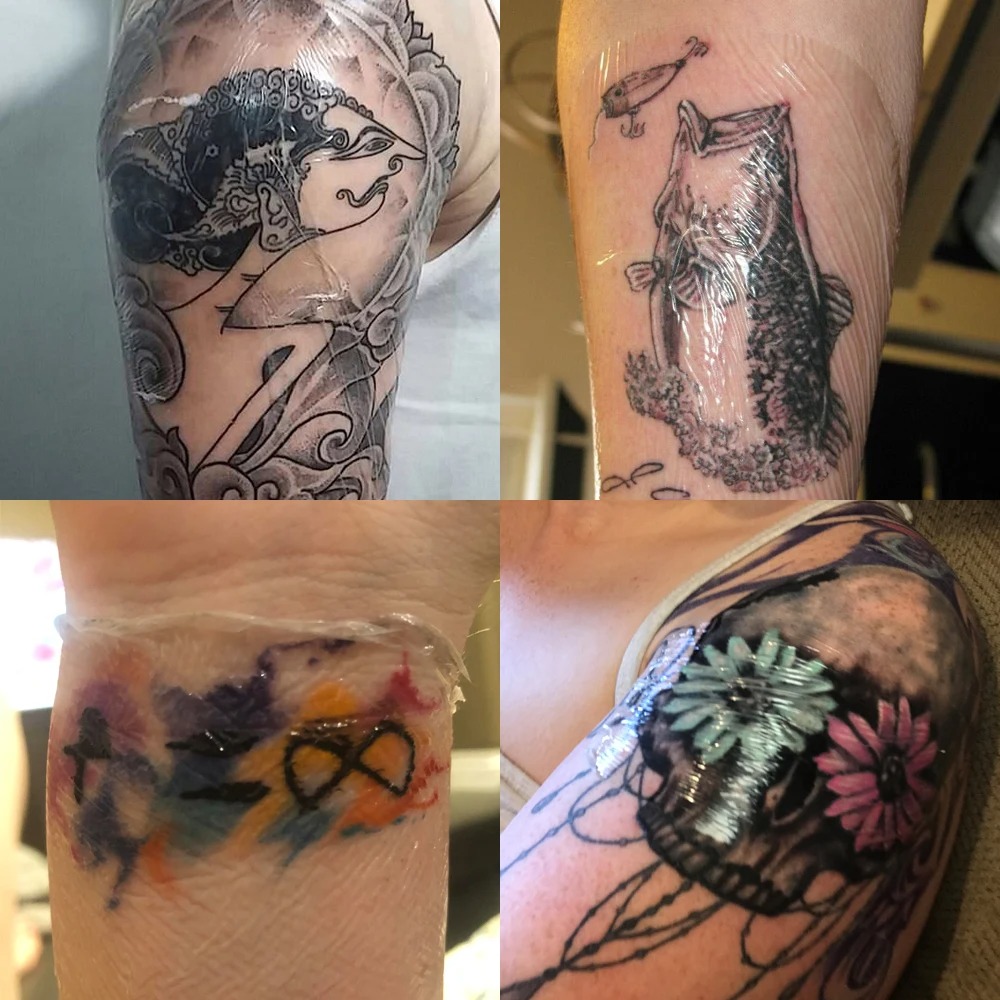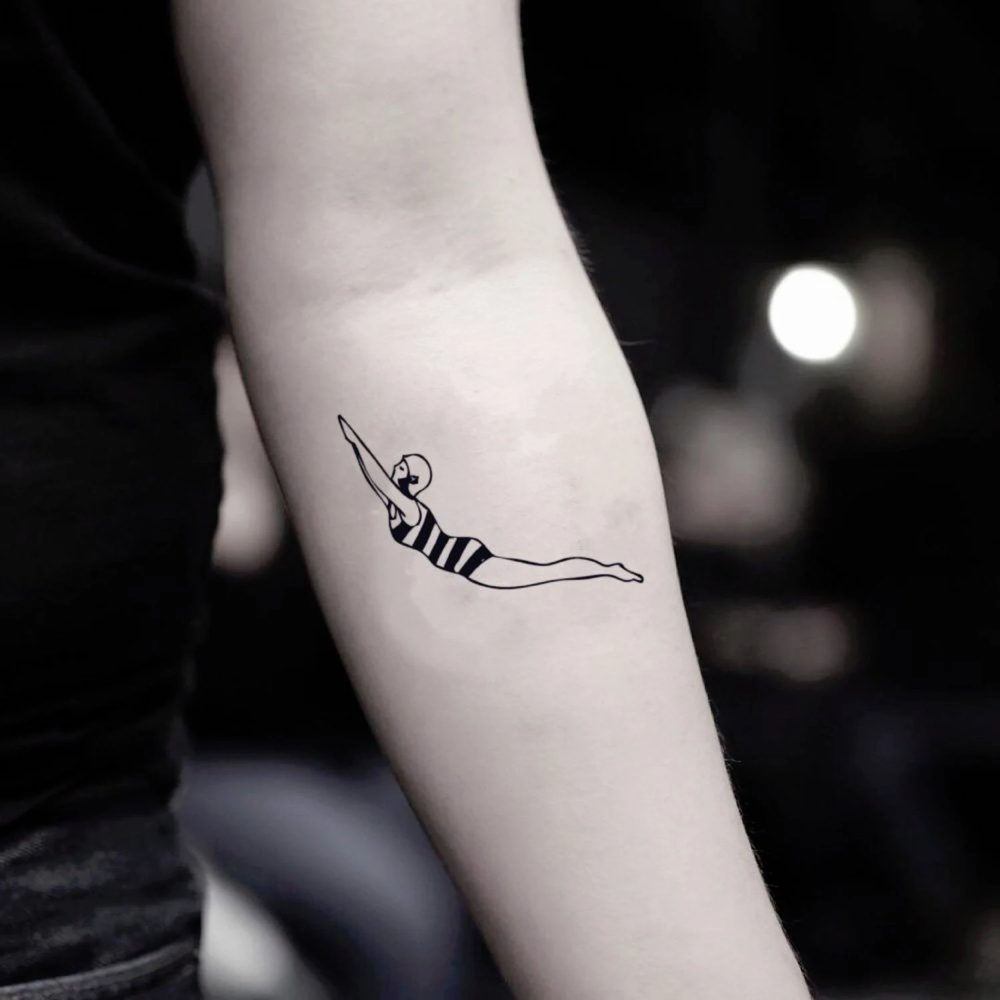Getting a new tattoo is exciting. The design represents personal meaning, artistry, or a milestone. However, after the needle stops, the healing process begins. One of the most common questions people ask is about swimming after tattoo. Can you go into pools, lakes, or oceans? The answer isn’t simple. Fresh ink requires careful protection. Water may seem harmless, but it carries risks during early recovery. Chlorine, bacteria, and prolonged soaking can damage the skin and affect the final look of your tattoo. Infections, fading, and scarring are real concerns. Therefore, understanding the timeline and precautions is essential. This article explores when it’s safe to swim after tattoo, what environments to avoid, and how to protect your investment. Whether you’re planning a beach vacation or just enjoy daily laps, this guide helps you make informed choices.
 Why You Should Avoid Water During Initial Healing
Why You Should Avoid Water During Initial Healing
The first two weeks after getting a tattoo are critical. Your skin treats the ink as a wound. It forms a protective layer while repairing itself. During this time, exposure to water increases the risk of complications. Pools, hot tubs, lakes, and oceans contain bacteria. These microbes can enter the open pores and cause infection. Even clean-looking water isn’t sterile. Chlorine in pools may kill some germs, but it also irritates healing skin.
Moreover, soaking softens the scabbing tissue. As a result, the scabs may fall off too soon. Premature peeling leads to patchy ink loss. Tattoos need time to settle beneath the skin’s surface. Excess moisture delays healing and invites inflammation. Showers are acceptable, but only brief ones with lukewarm water. Always pat the area dry gently. Avoid submerging the tattoo. Swimming after tattoo at this stage is strongly discouraged. Wait until the skin fully closes and stops flaking. Only then should you consider returning to aquatic activities.
How Long to Wait Before Swimming After Tattoo
Most artists recommend waiting two to four weeks before swimming after tattoo. The exact time depends on your body’s healing speed and aftercare routine. Some people heal faster; others take longer. Signs of readiness include no redness, no oozing, and complete shedding of dead skin. The area should feel smooth and look like normal skin, just with color. If any tenderness remains, wait longer.
Additionally, larger tattoos or those on joints may need extra time. Areas like ankles, elbows, or ribs move frequently. This movement stresses the skin and slows recovery. Sun exposure also plays a role. UV rays weaken fresh ink. Combine that with chlorinated water, and the damage multiplies. Saltwater poses another threat. While natural, it pulls moisture from healing skin and introduces sand and microbes.
Therefore, patience is key. Rushing into water jeopardizes months of planning. Consult your artist if unsure. They know your skin and technique used. Many provide written guidelines. Follow them closely. Remember, waiting a few weeks preserves your tattoo for years. Skipping this step could mean touch-ups—or worse, permanent distortion.
 Risks of Swimming Too Soon After Getting Inked
Risks of Swimming Too Soon After Getting Inked
Jumping into water too early brings several dangers. First, infection is a major concern. Bacteria thrive in warm, wet environments. Hot tubs and stagnant ponds are especially risky. Once inside the dermis, germs cause swelling, pus, and fever. Medical treatment may be needed. Antibiotics can resolve the issue, but scarring might remain.
Second, chlorine strips natural oils from the skin. Healing tattoos rely on moisture to form healthy scabs. Dryness leads to cracking and itching. Scratching damages the design. Also, pool chemicals break down ink particles over time. Early exposure accelerates fading. The colors lose vibrancy before they even finish healing.
Third, salt and sand create abrasion. Ocean waves push gritty particles against sensitive skin. This friction wears away thin layers where ink sits. Uneven healing results in blotchiness. Furthermore, freshwater lakes host parasites and pollutants. Algae blooms and runoff increase contamination risk. All these factors combine to threaten your tattoo’s integrity. For these reasons, avoiding all bodies of water is wise until full recovery.
Proper Aftercare to Prepare for Swimming After Tattoo
Good aftercare speeds up healing and prepares your skin for future swims. Start by washing the tattoo gently with mild, fragrance-free soap. Do this twice a day. Use clean hands and lukewarm water. Rinse thoroughly and pat dry with a soft towel. Never rub the area. Moisturize with a thin layer of recommended ointment or lotion. Products like Aquaphor or specialized tattoo balms work well.
Avoid picking scabs or peeling skin. Let the body shed naturally. Wear loose clothing to prevent friction. Keep the tattoo out of direct sunlight. UV rays harm new ink and increase sensitivity. Use SPF 30+ once healed, but never on open wounds. Stay hydrated and eat nutritious foods. Healthy skin repairs faster.
Track progress daily. Look for reduced redness and less tightness. When peeling stops and the surface feels normal, you’re nearing readiness. At this point, short test exposures help. Splash water briefly and watch for reactions. If no irritation occurs, you’re likely ready. But always confirm with your artist before full immersion. This careful approach ensures safer swimming after tattoo.
 Different Water Environments and Their Impact
Different Water Environments and Their Impact
Not all water is equally harmful. Each type presents unique challenges. Chlorinated pools are sanitized, yet still problematic. The chemical mix dries skin and alters pH balance. Even brief dips can trigger irritation. Indoor pools may seem cleaner, but recirculated water spreads contaminants. Public facilities see high traffic. More swimmers mean more bacteria entering the system.
Saltwater poses different issues. Oceans have natural antiseptic qualities, but movement and debris complicate things. Waves push sand into healing skin. Tiny particles scratch the surface. Additionally, salt draws moisture out. Dehydrated skin cracks easily. Cracks expose deeper layers to infection. Tides and currents also prolong exposure. Exiting doesn’t end contact—residual salt stays on skin.
Freshwater lakes and rivers carry organic matter. Leaves, algae, and animal waste introduce pathogens. Stagnant water breeds bacteria like pseudomonas. These cause serious skin infections. Even clear lakes aren’t safe. Rainfall can wash pollutants into the water. Hot tubs and saunas are worst. High heat opens pores wide. Steam traps bacteria against the tattoo. Soaking in any of these too soon greatly increases risk. Therefore, evaluate each environment carefully before deciding on swimming after tattoo.
Tips for Safely Returning to Water Post-Healing
Once your tattoo is fully healed, you can return to swimming safely. Still, protection matters. Apply a waterproof barrier before entering water. Some use liquid bandages or specialized tattoo sealants. These create a breathable shield. Reapply if staying in long. Alternatively, wear a waterproof dressing designed for tattoos. Make sure it adheres well and doesn’t trap sweat.
Limit time in water. Shorter sessions reduce exposure. After exiting, rinse immediately with clean, fresh water. Use mild soap to remove chlorine, salt, or lake residue. Pat dry and moisturize. Check for redness or stinging. If irritation appears, avoid water for a few more days. Sunscreen is crucial outdoors. Apply broad-spectrum SPF 30+ to prevent fading. Reapply every two hours.
Also, avoid diving or vigorous splashing. Forceful impacts stress the skin. Over time, this weakens ink retention. Choose calm waters when possible. Gradually rebuild tolerance. Listen to your body. If discomfort returns, take a break. With smart habits, you can enjoy swimming after tattoo without harming your art.
 Frequently Asked Questions About Swimming After Tattoo
Frequently Asked Questions About Swimming After Tattoo
Can I swim in a pool one week after getting a tattoo? No. One week is too early. The skin is still open and vulnerable.
What if my tattoo is covered with plastic wrap? Wrap is not enough. Water can seep under and bring bacteria.
Is showering okay during healing? Yes. Brief showers are fine. Avoid soaking or scrubbing.
How do I know when my tattoo is healed? The skin stops peeling, feels smooth, and has no scabs.
Can I go in a jacuzzi after three weeks? Only if fully healed. Most jacuzzis are high-risk due to heat and bacteria.
Will swimming ruin my tattoo forever? Not always, but it can cause fading, blurring, or infection.
Can I use sunscreen on a new tattoo? No. Wait until fully healed. Then apply SPF regularly.
Do waterproof bandages make swimming safe? They help, but don’t guarantee protection. Use them wisely.
 Final Thoughts
Final Thoughts
A tattoo is a lifelong piece of art. Protecting it starts the moment the needle lifts. Knowing when and how to return to water makes a big difference. Swimming after tattoo requires patience and care. Rushing leads to avoidable problems. Follow your artist’s advice and monitor healing closely. Respect the process. Healthy skin means vibrant ink. Whether you love lakes, pools, or oceans, timing is everything. By waiting and preparing properly, you preserve both beauty and health. Ultimately, swimming after tattoo can be safe—with the right knowledge and discipline.
